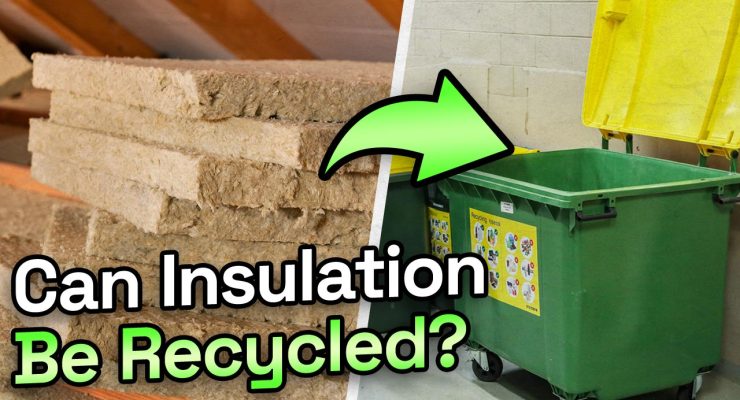Fast read
Roof insulation is essential for maintaining year-round comfort in your home. It slows down heat transfer, keeping your home warm in winter and cool in summer. This reduces the workload on heating and cooling systems, leading to lower energy bills—up to 35% savings!
Proper insulation also decreases your carbon footprint. Bulk insulation (like batts) and reflective insulation (foils) are effective options.
For optimal results, aim for an R-value of R4.0 in warmer climates and R5.0 or higher in cooler areas. Investing in roof insulation is a smart move for comfort, savings, and environmental impact.
Do I Need Roof Insulation?
When considering home improvements, you might wonder if roof insulation is worth the investment. Unlike visible upgrades like a fresh coat of paint or new fixtures, insulation works behind the scenes, yet it plays a critical role in enhancing your home’s comfort and energy efficiency. So, does roof insulation make a difference? Let’s explore how it works, its benefits, and why it’s a wise investment for your home.
Does Roof Insulation Make a Difference?
Many homes, especially older ones, lack adequate insulation. Under-insulated homes often feel too cold in winter and unbearably hot in summer. This can make heating and cooling systems work overtime, leading to high energy bills. Conversely, a well-insulated home maintains more consistent temperatures, offering comfort and efficiency regardless of the season.
How Does Roof Insulation Work?
Insulation slows down the transfer of heat, helping to keep your home warm in the winter and cool in the summer. Heat naturally moves from warmer to cooler areas, and insulation acts as a barrier to slow this process. There are two main types of roof insulation:
- Bulk Insulation: Materials like polyester and glass wool batts are filled with tiny air pockets that disrupt the pathway of heat, reducing heat transfer.
- Reflective Insulation: These materials have a reflective surface that repels radiant heat, keeping your home cooler in summer by reflecting solar heat and warmer in winter by reflecting heat back into the home.
Benefits of Roof and Ceiling Insulation
Year-Round Comfort
Insulation regulates indoor temperatures, ensuring a comfortable environment throughout the year. This helps during extreme weather by insulating against outdoor temperatures, reducing the need for constant heating or cooling.
Improved Energy Efficiency
Insulated homes require less energy to maintain comfortable temperatures. When heating or cooling systems are used, they don’t have to work as hard, which can significantly improve their efficiency and lifespan. This means you can enjoy a cosy home without overburdening your HVAC system.
Increased Savings on Energy Bills
Reduced energy consumption directly translates to lower utility bills. By insulating your roof and ceiling, you can cut your energy bills by 25% to 35%. Installing insulation may require an initial investment, but it can lead to long-term savings on heating and cooling costs. This makes it a wise financial decision.

Environmental Benefits
Lower energy usage reduces your carbon footprint. Most electricity in Australia is generated from coal, which contributes to greenhouse gas emissions. By reducing your reliance on heating and cooling, you help decrease these harmful emissions, contributing to a healthier planet.
When Is the Right Time to Install Roof Insulation?
The ideal time to install insulation is during construction or renovation when access to the roof and walls is easier. However, if you notice any of the following signs, it might be time to consider adding insulation:
- Fluctuating indoor temperatures
- Difficulty in maintaining desired temperatures despite using heating or cooling systems
- Rising energy bills
- Water damage in the ceiling (which can reduce insulation effectiveness)
What Is a Good R-Value for Ceilings and Roofs?
The R-value measures the insulation’s resistance to heat flow. The higher the R-value, the better the insulation.
For warmer climates like Perth, Brisbane, and northern NSW, a minimum R-value of R4.0 is recommended. For cooler areas like Melbourne and Adelaide, consider R5.0 or R6.0. Upgrading to the highest R value your budget allows can provide greater comfort and energy savings.
Is It Better to Insulate the Ceiling or Roof?
Both ceiling and roof insulation have their advantages. Ceiling insulation is installed between the ceiling rafters, while roof insulation is placed under the roof materials. Typically, a combination of both types of insulation is used to maximise efficiency. The specific method will depend on your home’s design and your insulation needs.
So, Does Roof Insulation Work and Is It Worth the Investment?
Absolutely. Insulation has been proven to significantly enhance the energy efficiency of homes.
Insulation is a wise investment for your home. It can increase comfort, reduce energy usage, and save you money on bills. This is true whether you live in sunny Perth or chilly Victoria.
Conclusion
Investing in roof insulation is a smart decision for any homeowner. It makes your home more comfortable and saves money on energy bills while also helping the environment. If you’re considering improving your home’s energy efficiency, roof insulation is a great place to start. Consult with insulation specialists to find the best insulation products for your needs and enjoy the long-term benefits of a well-insulated home.



